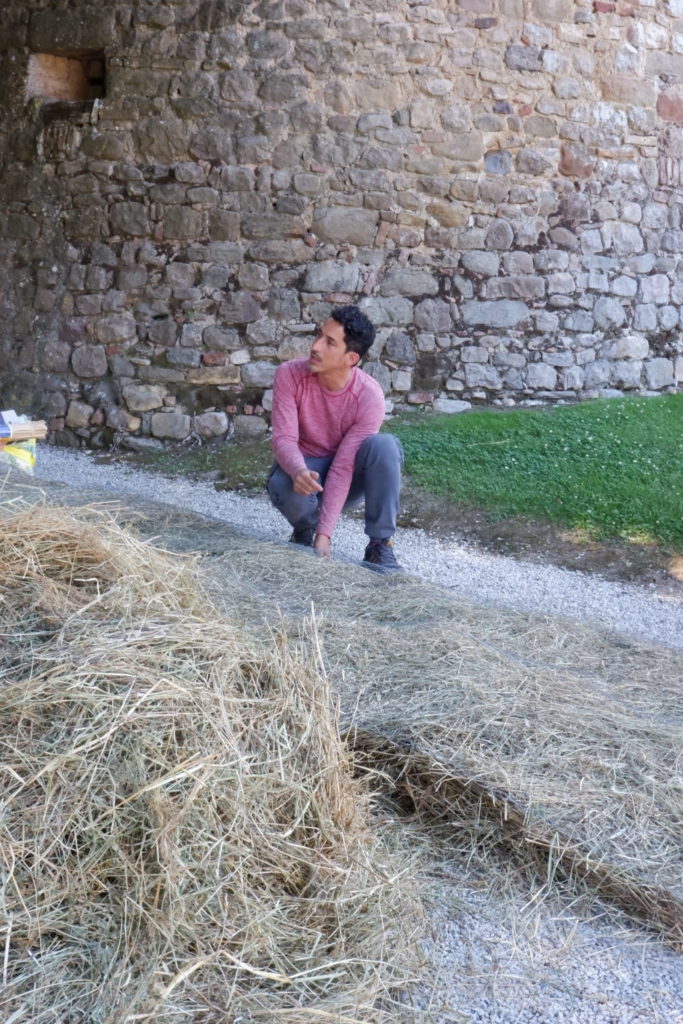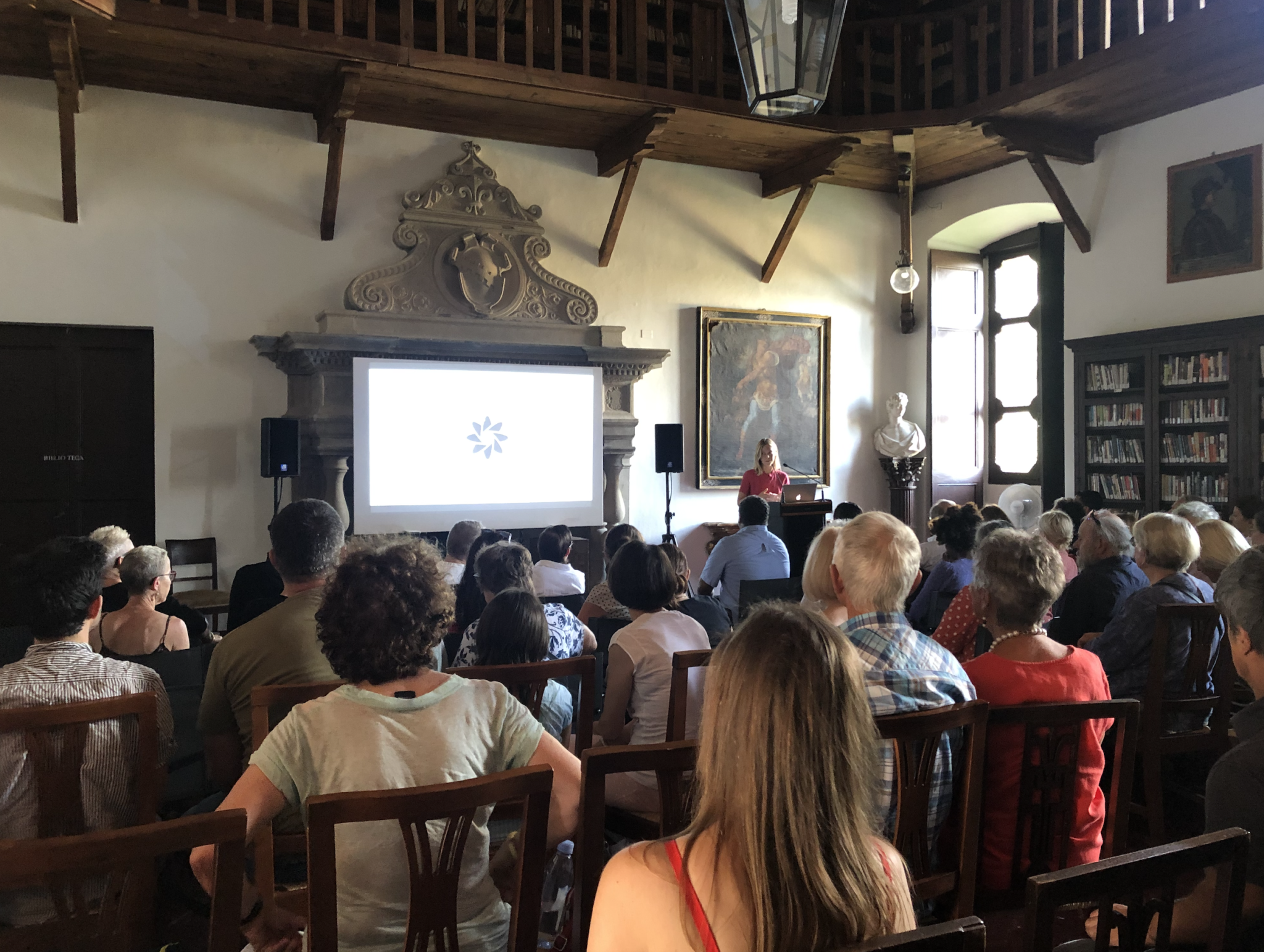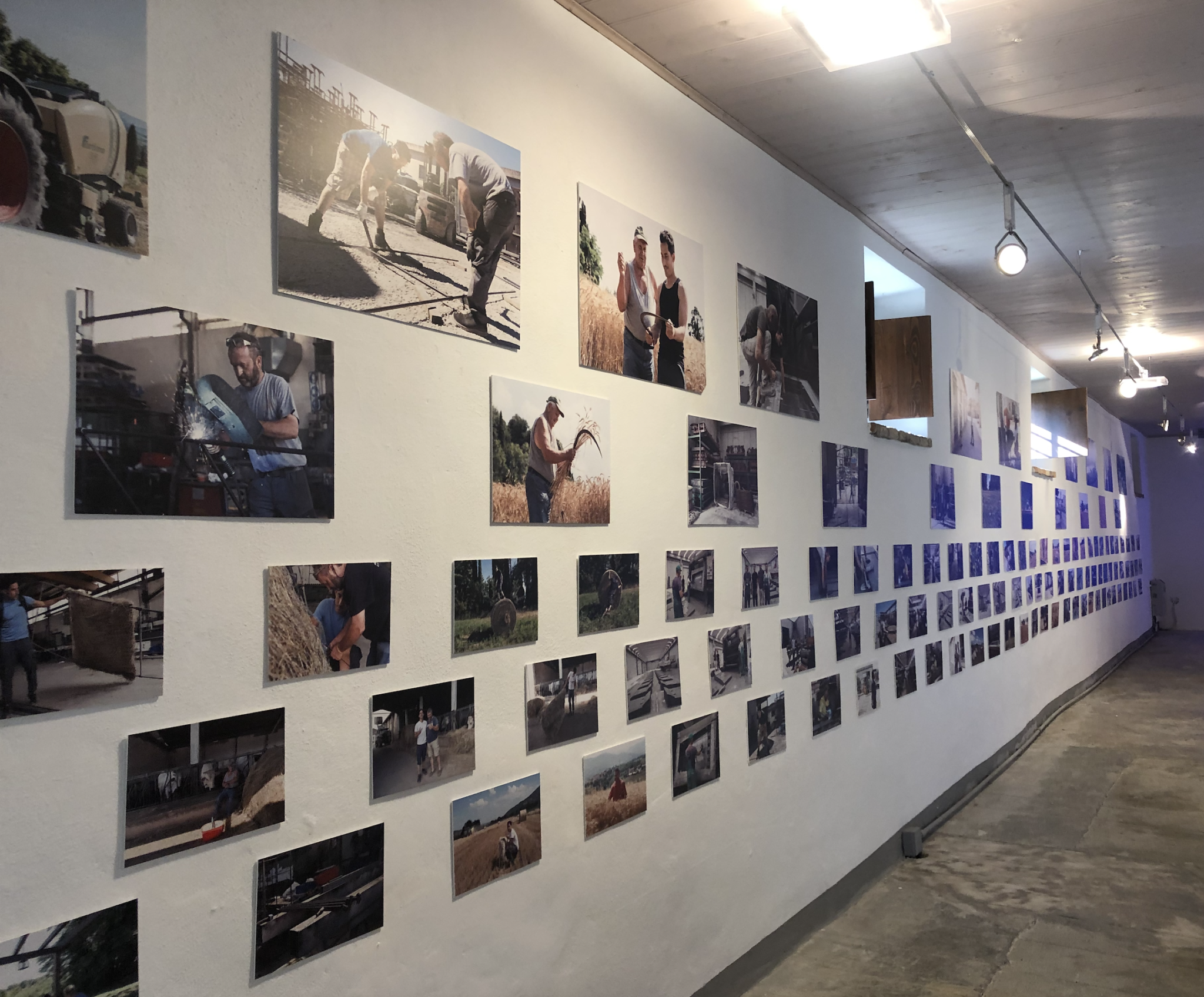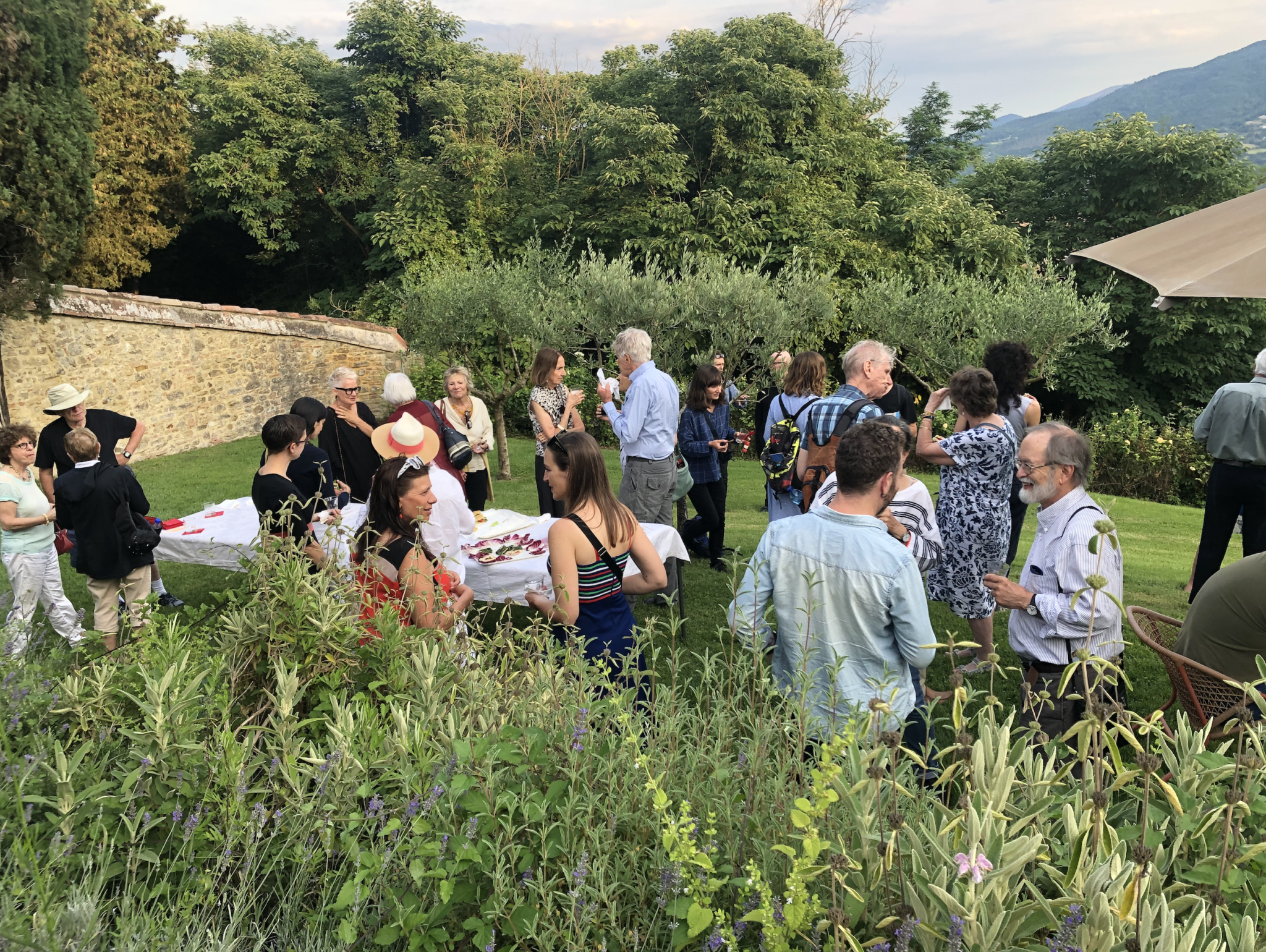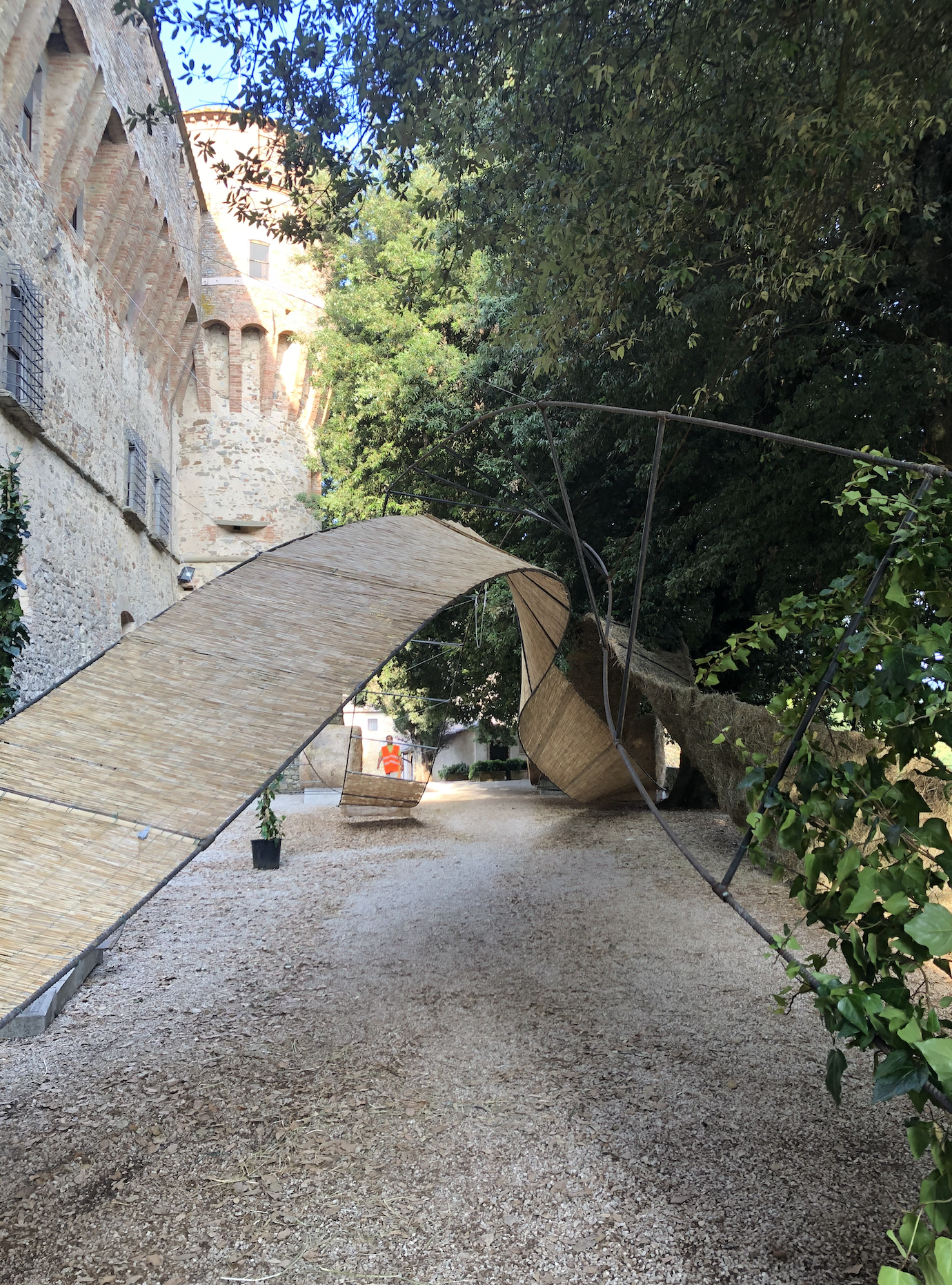Venezualian Alejandro Haiek (CRF 2019) is the co-founder of LAB.PRO.FAB, a laboratory focusing on community-led initiatives in the barrios of Caracas. He uses a ‘bottom-up’ approach to reactivate underused urban spaces. He crosses technical expertise with local intelligence to build productive spaces in low-income areas.
Haiek was the chosen architect for the WOJR/Architecture Fellowship Prize, established by Liam O’Brien. This competitive prize brings a talented architect to Civitella to design and construct a site-specific temporary installation on the castle grounds using simple means and locally-available materials.
This summer, Alejandro Haiek conceived a project he called, The Industry of Nature: an interactive ‘performative tectonic installation’ on the grounds of the castle. The three overall themes explored in project were: “Tracing Tradition,” a social mapping process; “Unfolding traditions,” a set of choreographed landscape interventions; and “Twisted Tradition,” which resulted in the on-site installation.
During his Fellowship at Civitella, Alejandro researched the castle environs considering how nature and industry work in tandem to form the traditional Umbrian landscape. He was particularly struck the hay bales dotting the Umbrian countryside adjacent to the castle, and how they affect our perception of the landscape. The research led him to question our understanding of the natural world before him. What is nature? When and how does nature becomes artifice? When does artifice appear ‘natural’? The project ultimately demonstrated how ‘nature’ can be an artificial construction within a post-industrial landscape, and how procedures, protocols, instruments and tools brought about by industrialization evolve slowly into tradition, aesthetics and cultural knowledge.
His process of what he calls ‘fast assemblage/slow architecture’ began with meeting local laborers, builders and fabricators to identify talents and resources with which to collaborate. Using lines, dots, steel strips and organic surfaces, the resulting undulating form installed on the ‘Russian Terrace’ of the castle recalled functional traces and seductive patterns of the hay bales. The project recalled the invisible geometries of industry in the neighboring hillside.
With about one hundred people in attendance, Alejandro launched his project. He gave a talk in the library. Visitors then moved to the ‘Russian Terrace’ to see the installation. Collaborations with other Fellows in residence enhanced his project. For instance composer Nina C. Young composed a soundtrack inspired by the installation; composer Texu Kim made a video to accompany the gallery show which documented Alejandro’s process, and others had helped to physically install the work for the opening. The evening ended in the Castle’s Secret Garden with an “apericena” and with the Gallery exhibition that displayed Alejandro’s drawings, photographs, maps and research.
Civitella Ranieri Foundation would like to give formal thanks to Liam O’Brien, Giorgia Fanelli, the Pauselli family, and the Ex-Up architecture group of Umbertide for collaborating with Alejandro.

